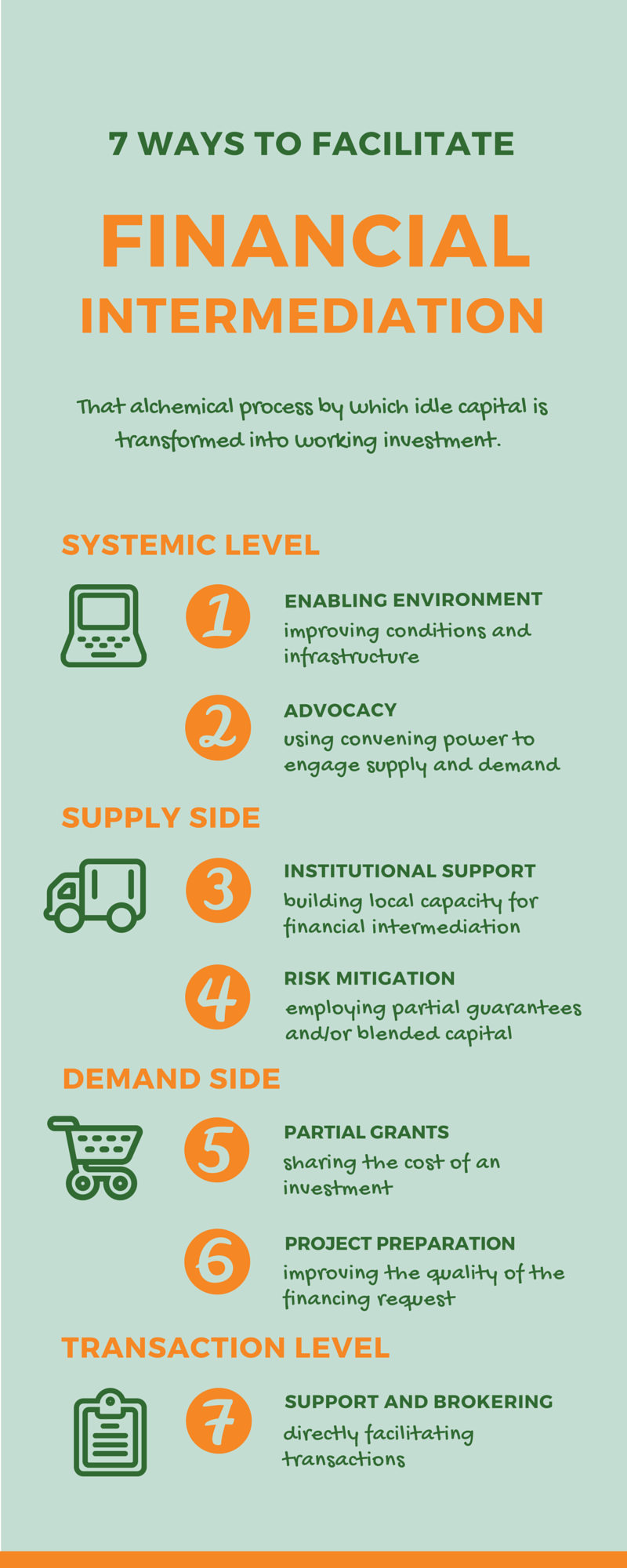Two Weeks Out and We’ve Reached the Platte River: On the Seven Approaches to Financial Intermediation

We’ve been on the trail now for 15 days, and it’s been slow. Two days out from Independence, we broke an axle that cost us half a day. And, when we hit the Blue River, it was too swollen to cross, and we lost a full day. But we made the Platte yesterday; we are now heading due west and making good time. I reckon we’ll get there before the snow flies.
Weather has been good – mild days and cool nights. And this is mighty pretty country: the prairie is alight with Asters and Joe-Pye weed. And game is abundant – yesterday, one of our outriders (young Tucker) brought down an antelope, and we all enjoyed a fine feast.
At our last trail meeting, we agreed to take a big sky approach to “private capital” and see it as every dollar available for investment that is not held by the government, donors, or international financial institutions. And we went over the four points where we can try to move investment along – on the systemic level (getting the conditions right for investment to happen more easily), the supply side (working with the holders of capital), the demand side (working with those who need the capital), and the transaction level (helping to get the deal done).
Now let’s dig a little deeper. What, specifically, can we do to support “financial intermediation” (that alchemical process by which idle capital is transformed into working investment)? We see seven ways that we can assist with this process (with the understanding that the lines between them are neither hard nor fast).
On the systemic level:
- Enabling Environment/Financial Sector Infrastructure Support: Support to improve the general conditions that enable intermediation as well as the infrastructure that enables intermediation (pledge registries, payment systems, etc.). Little known fact: USAID spent around $1.2 billion in the ’90s to rebuild the financial systems of Central and Eastern Europe. Regulation, supervision, capital markets, and bank associations comprised the comprehensive approach that rebuilt those financial systems.
- Advocacy and Convening: Using convening power to engage the supply and demand sides around investment priorities (such as power and food security) and advocate for needed reforms that will facilitate those investments. Time will tell, but the commitments garnered for Grow Africa and Power Africa are impressive.
On the supply side:
- Institutional Support/Capacity Development: Supporting financial institutions to improve their capacity to intermediate capital. USAID and others have a long and successful tradition of building local intermediation capacity – ranging from microfinance institutions to domestic capital markets.
- Risk Mitigation/Transaction Sweetening: Employing partial guarantees to reduce risk and/or using blended capital or incentives to increase the yield for financing providers (and potentially lowering the financing cost). A tried and tested approach with proven results. One of the most promising approaches here is “pay-for-performance” – incentives paid upon the accomplishment of milestones. More about this to come!
On the demand side:
- Partial Grants/Cost Sharing: Using grant funds to share the cost of an investment (thus making it easier for the financing to come in). Global Development Alliances (GDAs) are a great example. Question: How can we determine that grant/cost share provided is the least possible to make the transaction happen?
- Project Preparation/Business Advisory Services: Supporting prospective transactions through improving the quality of the financing request and/or covering costs associated with the financing request. It helps to get a potential transaction to the point at which it can be analyzed by a prospective financier. Demand side support from USAID’s Private Financing Advisory Network (PFAN) project estimated 70:1 leverage. Beat that!
On the transaction level:
- Transaction Support/Brokering: Directly facilitating transactions to include the structuring of transactions and seeking/brokering financing. Basically providing the transaction specific support to move a deal across the finish line. Power Africa uses this approach to nudge deals to conclusion.
Alright, it’s time to bed down – camp wakes at 4 a.m. and it’s already past 9 p.m. So, before you drift off, here are two vignettes to sleep on. As you read them, think about what the challenge was that needed to be solved and which of these seven kinds of intervention was used. And don’t be afraid to jump in and post a comment or two with some of your own vignettes. It’s still a long journey, and we need your company!
Next Up: Time to Bed Down! Two Vignettes to Sleep On


